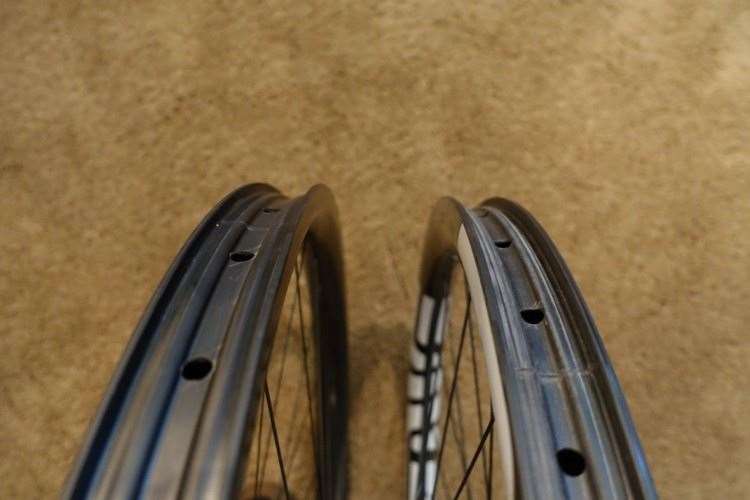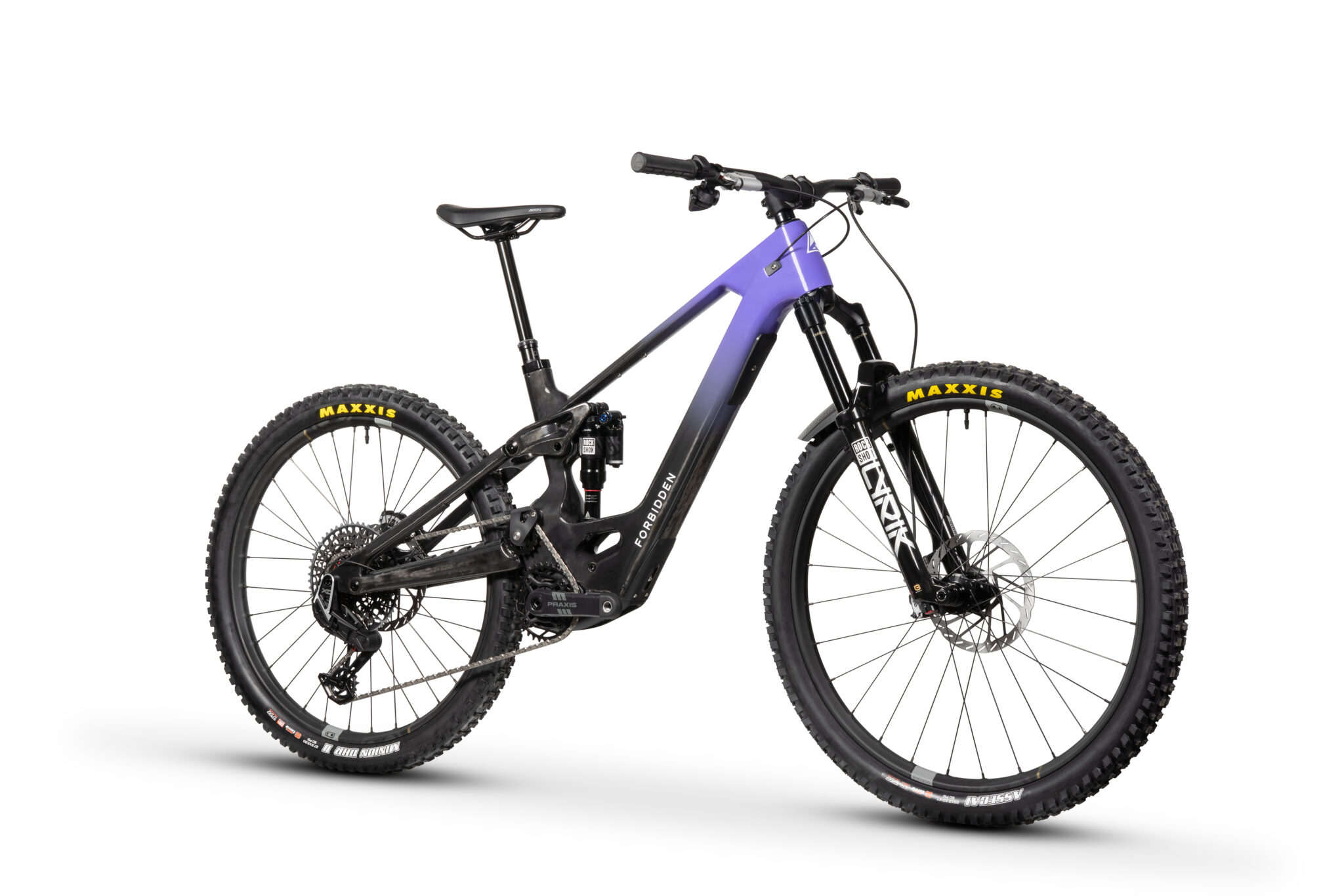ENVE Composites Prototypes Wider Carbon Rims
Is wider better? ENVE Composites are taking a measured response to the growth in wider MTB rims, with prototypes and a lot of testing.
Based out of Ogden in Utah, ENVE are best known for their carbon fibre road and mountain bike rims, as well as handlebars, stems and seatposts. They undertake manufacturing in their state-of-the-art facility in Utah, where they also carry out design, prototyping and destructive testing for both their own rims, and their competitors too.
While using carbon fibre for a mountain bike wheel set would have been a laughable proposition 5 or so years ago, you’ve largely got ENVE to thank for bringing composite technology to the brutal world of mountain bike racing, as well as establishing consumer trust in the finished product. These days, you’ll see carbon fibre wheels everywhere on the trail. But while ENVE were one of the original pioneers for carbon wheel production, they are now faced with many more competitors in 2015 than they did a decade ago. Many of those competitors are stepping up in their production techniques, as well as pushing the current trend for wider and wider rims. Being the innovation-driven company that ENVE are however, they aren’t one to sit on their laurels. During 2015 PressCamp, we got a closer look at the testing going on behind the scenes at ENVE, as well as their take on the current market trend for ultra-wide mountain bike rims.

Just over 12 months ago, ENVE introduced their new line of M-Series mountain bike rims. Using a numbered labelling system, ENVE unveiled both their lightest (the 330 gram M50) and also the strongest (the M90) mountain bike rims they have ever produced. But M-Series wasn’t just about number crunching, it was also about creating a better ride quality too. The “Ride Tuned” concept with M-Series was to identify each type of rider, and create a specific rim profile and layup that would suit that riders intentions and tyre choice. As such, the M50 is designed for a 2.1″ wide XC tyre, the M90 is designed for a 2.5″ wide DH tyre, and the M60 and M70 sit somewhere in between. Although these rims went wider than previous models, relative to brands such as Syntace and Ibis, the ENVE equivalents aren’t what you would consider ‘super wide’ by modern standards.
Why the hubbub about wide rims? Well, most brands pushing ultra-wide rim widths are claiming that the broader rim width provides a more stable base for the tyre, while increasing overall tyre volume to put more rubber on the ground at the one time. More rubber contact equals more traction, and more stable sidewalls equals more cornering stability. Some suggest that because of the ‘growing effect’ that the wider rim has on the tyre’s profile, you can also get away with a narrower and lighter weight tyre, without sacrificing traction and still enjoying a faster accelerating wheel set. All very good stuff, but is it too good to be true? That’s a question that ENVE have been attempting to address over the past 12 months.

Following consumer calls for wider rims to match the competition, ENVE set out on an exhaustive array of testing and research to find out what the effects of going to a wider rim actually meant and whether there was such a thing as too wide. Of course one of the huge variables that must be taken into consideration when discussing the wide rim movement is the tyre. Every model of tyre on the market is a little different in its construction, and they all react a little differently when fitted to narrow rims versus wide rims. As a general rule, most tyres do grow in overall width when mounted to a 30mm (internal) rim versus say a 21mm rim. What ENVE have found throughout their testing however, is that most of this growth is in the tyres casing, and not necessarily in the tread. What that means is that you may be putting more rubber in contact with the ground, but the ultra-wide rims can have an affect that sees the tyre sit much squarer in its profile, which can lead to unpredictable cornering when you see a transition from the cornering blocks to the otherwise bald casing. And that’s not exactly a good thing.

During the initial test phase, ENVE began prototyping wider rims and putting them underneath test pilots and team riders, including the Syndicate World Cup downhill team. They tested various rim profiles and set out to determine where the balance could be achieved between weight, strength, width and ride quality. What they began to find was that while there are some benefits of going to a broader rim platform, there were diminishing returns as they went super wide. Beyond a 31mm internal rim width, they found that the tyre casing would bulge out too far, and the added material in the rim lead to a heavier wheel. What they also found was that some tyres suited the wider rims, while other tyres didn’t. In some cases this was to do with the overall change in profile of the tyre, but in other cases they found there was also less compliance with some tyres when fitted to a wider rim. The end conclusion from this test phase was that tyre and rim development needed to occur in tandem, so that tyre manufacturers are developing their rubber for specific width rims. As it stands, the ultra-wide rim movement is accelerating so fast, that tyre manufacturers aren’t keeping up.

So where does that leave ENVE? Well they do believe that there is a place for wide rims, but they’re assessing the design very carefully and with much research in conjunction with tyre manufacturers. As you can tell from the above photos, they are definitely testing and refining new wider rim profiles, and we can tell you that there will be two new models coming to market in late-August. There will be the M60 HV, and the M70 HV, where HV stands for ‘High Volume’. In terms of the difference in internal rim width, you’re looking at 26mm for the M60 HV (versus 23mm on the regular M60), and 31mm on the M70 HV (versus 25mm on the regular M70). These rims will be an addition to the existing M-Series range, and not a replacement, though we imagine that sales will largely dictate what happens moving forward. ENVE do believe that there is a place for wide rims, but they’re assessing the design very carefully and with much research in conjunction with tyre manufacturers. ENVE are very keen to point out that their current M-Series line is about “matching the right rim with the right tyre”, and that ethos extends to their new wider prototypes. Keep an eye out for news on the HV rims around Eurobike, and we’ll be very interested to see what comes of ENVE’s joint development with their tyre partners.







